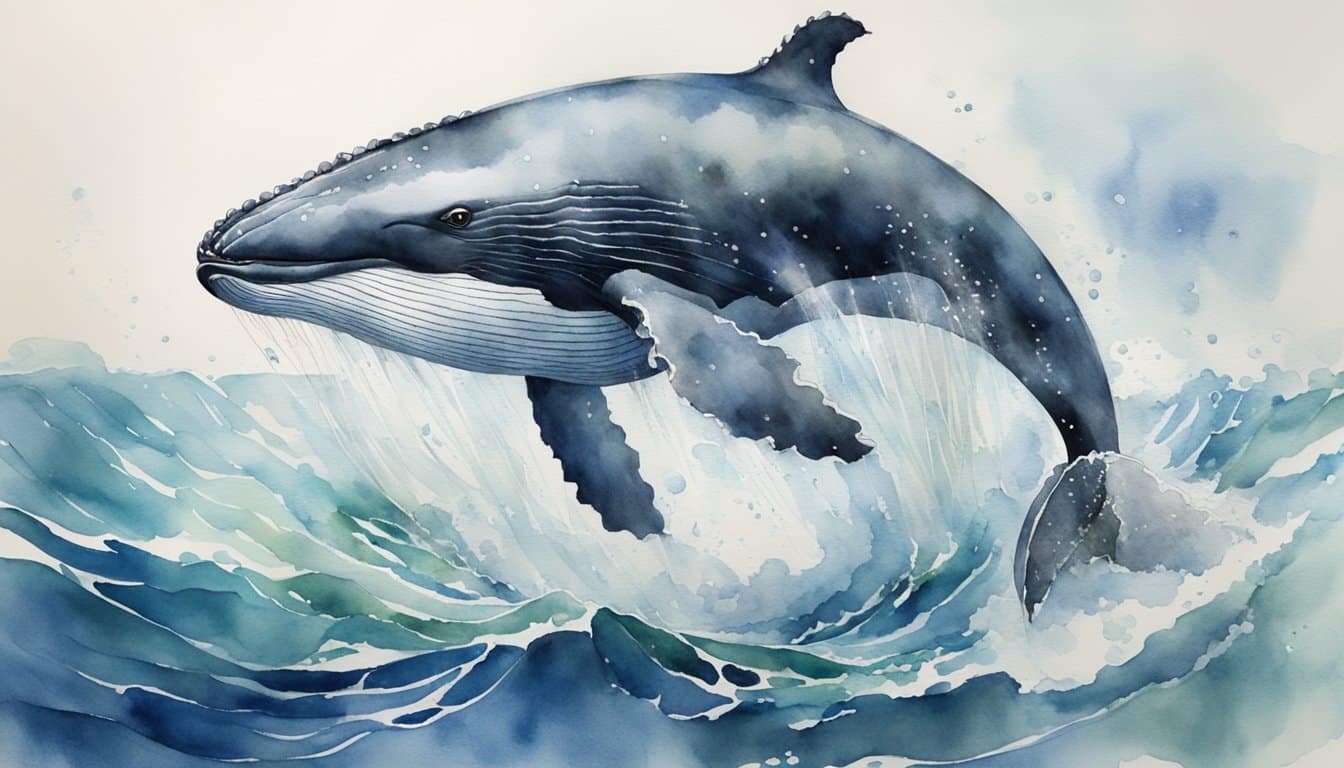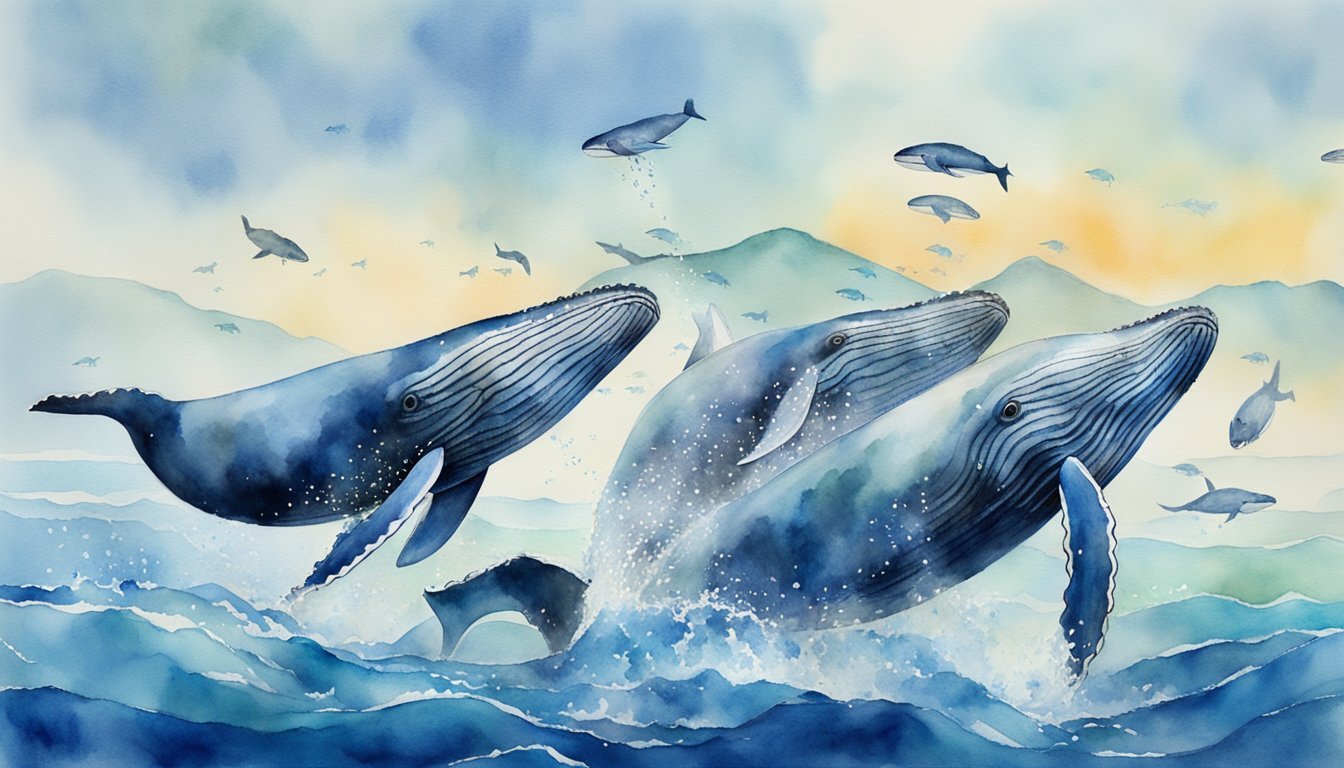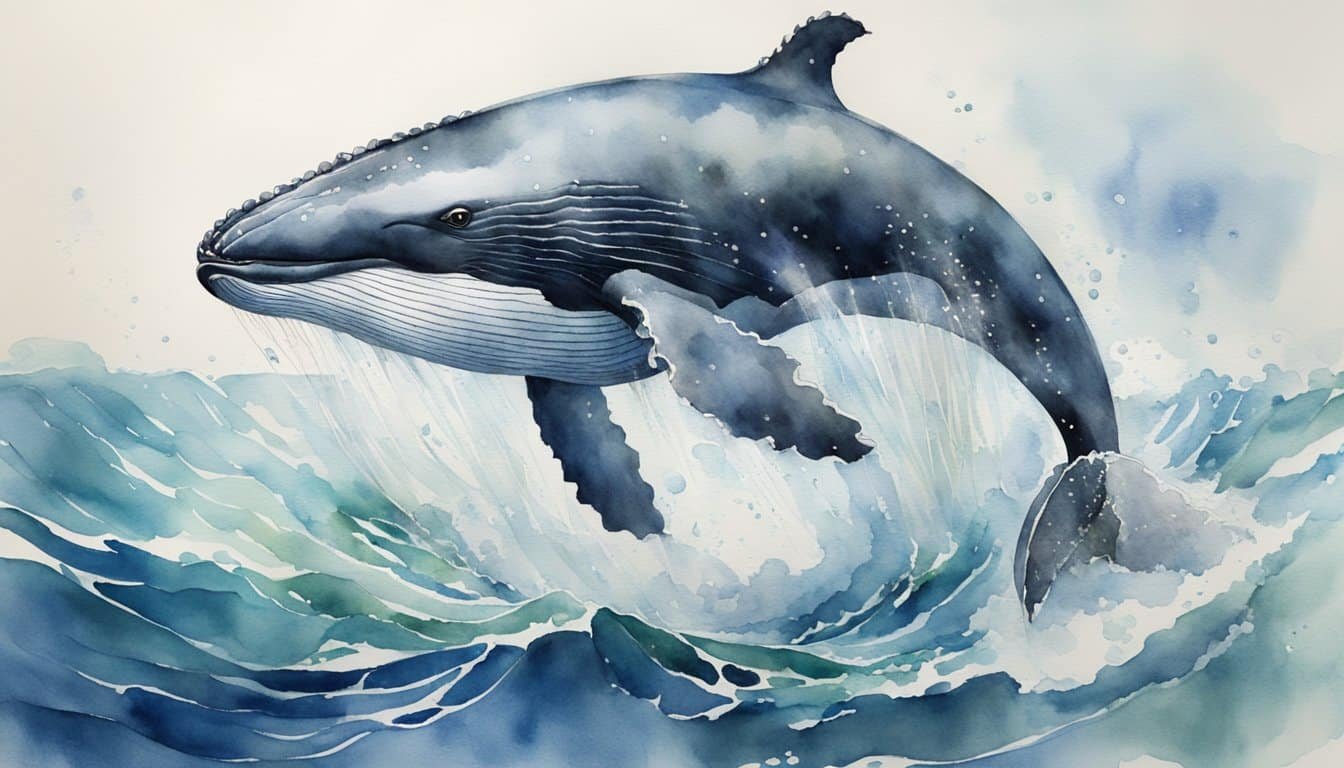Humpback Whale Diet and Feeding Habits
Humpback whales are known for their impressive feeding techniques and diverse diet, which play a critical role in their survival across various oceans.
Primary Diet Components
Humpback whales primarily feast on krill, small fish, and plankton. When it comes to crustaceans, they mainly consume tiny, shrimp-like creatures known as krill. In terms of fish, their diet often includes herring, pollock, haddock, mackerel, and capelin. These components are rich in nutrients and provide the energy needed for their long migrations.
Hunting Techniques and Feeding Behaviors
These baleen whales have evolved unique methods for gathering food, one of which is known as bubble netting. This strategy involves a group of humpback whales swimming in a circle and blowing bubbles to create a “net” that traps their prey. The whales then swim upward with their mouths open, using baleen plates to filter feeding, separating their prey from the ocean water. Another tactic seen in humpback whale behavior is the lunge feeding technique, where they charge through dense clusters of food with their mouths wide open to capture large amounts of prey.
Feeding Grounds and Migration Patterns
Feeding grounds for humpback whales are typically found in cold, nutrient-rich waters where their prey is abundant. As they are migratory, they travel to tropical or subtropical waters during the breeding and calving season. This journey is one of the longest migrations in the animal kingdom, with feeding behaviors adapting according to the region and availability of food. In the Southeast Pacific, for example, they’ve been observed engaging in lunge feeding near coastal areas.
Physical Characteristics and Life History

Humpback whales boast some of the most intriguing traits in the marine kingdom. With their massive size and theatrical courtship displays, they are among the ocean’s most fascinating creatures.
Growth and Physical Features
Humpback whales are easily identifiable by their impressive lengths of up to 60 feet and weights that can tip the scales at around 80,000 pounds. They are known for their enormous pectoral fins, which can span up to one-third of their body length, and their distinctive tails that contribute to their acrobatic breaches. Their bodies are primarily dark, with a paler underbelly, and each whale has a unique pattern on the underside of its tail flukes, which helps researchers in identification.
| Feature | Characteristic |
|---|---|
| Length | Up to 60 feet |
| Weight | Up to 80,000 pounds |
| Pectoral Fins | Up to one-third of body length, longest of any whale species |
| Tail Flukes | Distinctive patterns used for identification |
| Dorsal Fin | Small and varies in shape |
They lack a prominent dorsal fin, with just a small hump-like fin located two-thirds down their back. Humpbacks are also distinguished by their knobby heads dotted with protuberances called tubercles.
Life Cycle and Reproduction
The life cycle of a humpback whale is a long journey, often spanning 80 to 90 years. Calves are born after a gestation period of about 11 months and are nursed with their mother’s fatty milk for nearly six months, gaining up to 100 pounds a day. They reach sexual maturity at around 5-10 years of age. During the mating season, humpbacks engage in elaborate courtship behaviors, showcasing complex songs and aerial displays, which are thought to play a role in attracting mates.
| Life History Event | Detail |
|---|---|
| Lifespan | 80 to 90 years |
| Sexual Maturity | 5-10 years |
| Gestation Period | ~11 months |
| Nursing Period | ~6 months |
| Weight Gain as Calves | Up to 100 pounds a day |
| Courtship Behaviors | Singing, breaching, and other displays during mating season |
Further details on the humpback whales’ diet and feeding patterns are available through research on their feeding dynamics, which shows how these immense creatures can consume up to 3,000 pounds of food per day during feeding seasons.
Conservation and Threats

Humpback whales are fascinating marine giants known for their acrobatic displays and complex songs. Yet, their existence is fraught with challenges, calling for robust conservation measures to ensure their survival and the health of ocean ecosystems.
Challenges to Survival
Humpback whales, or Megaptera novaeangliae, face numerous threats in today’s oceans. As baleen whales, they were heavily targeted during the era of commercial whaling, which significantly reduced their populations worldwide. Although whaling has been largely halted, these magnificent creatures still contend with dangers like entanglement in fishing gear, collision with ships, and the pernicious effects of ocean pollution.
These threats not only injure and kill humpback whales but also disrupt their crucial behaviors such as feeding, mating, and the nurturing of their young. Moreover, climate change alters the distribution of their prey, directly impacting their ability to find adequate nutrition. Humpback whales are known for their characteristic feeding techniques, such as bubble netting, which require specific conditions that are being altered by the warming of ocean waters.
Efforts in humpback whale conservation are centered around legal protection to prevent overexploitation and manage the impact of humans on their natural habitat. Protected areas and regulations to govern shipping lanes are being established to reduce the risk of ship strikes. In addition, researchers and conservationists are working to develop safer fishing gear and practices to minimize entanglement incidents. Public awareness campaigns target pollution, aiming to reduce the amount of debris that ends up in our oceans, potentially harming marine mammals.

